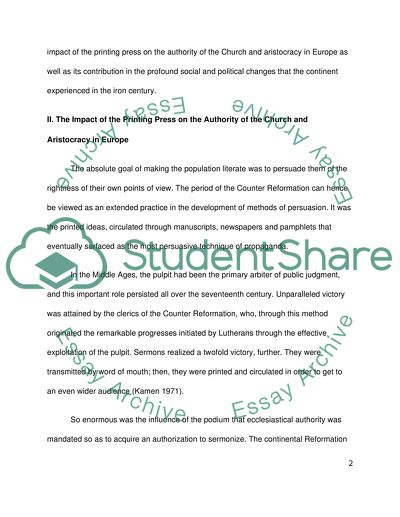Cite this document
(Discuss and explain how printing affected the authority held by the Coursework, n.d.)
Discuss and explain how printing affected the authority held by the Coursework. https://studentshare.org/social-science/1557337-discuss-and-explain-how-printing-affected-the-authority-held-by-the-church-and-the-aristocracy-in-the-europe-and-how-this-led-to-profound-social-and-political-changes
Discuss and explain how printing affected the authority held by the Coursework. https://studentshare.org/social-science/1557337-discuss-and-explain-how-printing-affected-the-authority-held-by-the-church-and-the-aristocracy-in-the-europe-and-how-this-led-to-profound-social-and-political-changes
(Discuss and Explain How Printing Affected the Authority Held by the Coursework)
Discuss and Explain How Printing Affected the Authority Held by the Coursework. https://studentshare.org/social-science/1557337-discuss-and-explain-how-printing-affected-the-authority-held-by-the-church-and-the-aristocracy-in-the-europe-and-how-this-led-to-profound-social-and-political-changes.
Discuss and Explain How Printing Affected the Authority Held by the Coursework. https://studentshare.org/social-science/1557337-discuss-and-explain-how-printing-affected-the-authority-held-by-the-church-and-the-aristocracy-in-the-europe-and-how-this-led-to-profound-social-and-political-changes.
“Discuss and Explain How Printing Affected the Authority Held by the Coursework”. https://studentshare.org/social-science/1557337-discuss-and-explain-how-printing-affected-the-authority-held-by-the-church-and-the-aristocracy-in-the-europe-and-how-this-led-to-profound-social-and-political-changes.


